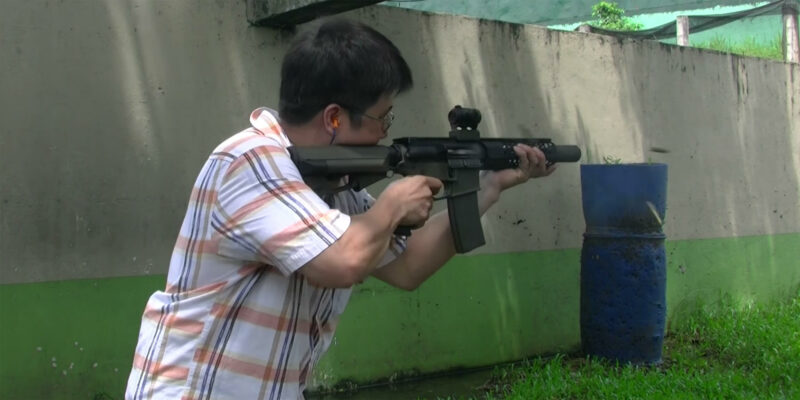5 Negligent Discharges & How to Avoid Them

Many of the activities we participate in are inherently dangerous. From driving a vehicle on a highway to riding a bicycle to participating in shooting sports. All of these activities are dangerous, which is why we have safety rules to abide by. Follow these safety rules and all of these activities can be done safely.
For shooting sports and other firearms activities, abiding by the 4 rules of firearms safety goes a long way in keeping everyone safe.
- Always treat a firearm as if it were loaded
- Never point a firearm at something you are not willing to destroy
- Always be sure of your target and what is beyond it
- Always keep your finger off the trigger until you are ready to shoot
Breaking these rules is annoyingly easy, especially with handguns. Let’s take a look at some negligent discharges so we can learn from other people’s mistakes so we don’t make them ourselves.
Not clearing a firearm properly
This negligent discharge is quite simple and easy to create. He dropped the mag and pulled the bolt back, but either didn’t pull the bolt back all the way or the extractor didn’t catch on the case. He then pulled the trigger to check if it was clear instead of looking in the chamber, and it wasn’t clear. Thankfully he was on the shooting range with the gun pointed down range, so it was a safe negligent discharge.
https://youtu.be/C2Z1xplpEAs
Also not clearing a firearm properly
This is what happens when that same negligent discharge happens and you’re not at the shooting range. NEVER trust a safety and always treat a firearm as if it were loaded.
https://youtu.be/QNa5n2I_DUw
Also not clearing a firearm properly
This is a rather old video, but still teaches an important lesson. This DEA agent dropped the magazine, locked the slide, re-inserted the magazine, and then released the slide, chambering a round. He had no business pulling the trigger in that situation and he did not properly empty the gun anyways.
Always treat a firearm as if it were loaded, and always drop the magazine first, then rack the slide. A firearm with a magazine inserted is not safe.
Improper holstering of a handgun
This type of negligent discharge is quite common. Holstering a loaded firearm is a dangerous action as the gun is pointed towards your body and it is loaded. If something gets into the trigger guard, it is going off. This type of negligent discharge often happens when a low-quality holster, damaged holster, or article of clothing creeps into the trigger guard and catches the trigger during holstering.
Always check the holster to ensure proper working condition and to ensure there are no foreign objects creeping into the holster. Watch the gun all the way into the holster.
Fumbling on the draw
When pushing for speed, it’s easy to make mistakes. While it is difficult to see exactly what happened due to the pixelation, it looks like the shooter did not grip the handgun properly while drawing from the holster, fumbled, and a finger got into the trigger guard, causing it to go off while falling.
Always ensure a positive grip on the firearm. If you start to drop a gun, let it fall. “A falling gun is all trigger” as the saying goes. It’s more likely to go off by you grabbing at it, than it is by hitting the ground.
Finger on the trigger
This type of negligent discharge is quite the scary one given the circumstances. It’s also completely avoidable if the police officer simply keeps her finger off of the trigger. It’s very easy to twitch your fingers in a stressful situation, and arresting someone is quite the stressful situation. It takes a split second to move your finger from the side of the handgun to the trigger. There’s no need to create a safety issue by keeping your finger on the trigger, especially when you are pointing a gun towards a person.
Always follow the rules of firearms safety
Always treat a firearm as if it were loaded. That simple rule can keep something very tragic from happening. Remember, all mechanical devices fail. Eventually, a gun will fail. If a gun is pointed in a safe direction when it fails, then the worst that will happen is some property damage.
Written by Brian Purkiss - always a student, sometimes a teacher.
I don't consider myself a competition shooter - I think of myself as a performance pistol shooter. I am all about performing at as high of a level as possible. Towards that end, I am obsessive about learning how to perform. I spend a lot of my life learning from the best across the entire firearms world and even into other areas of performance and other sports. I am a USPSA Carry Optics Grandmaster, currently working towards my second GM title in the Open division.
Want more? Follow on Instagram, Facebook, or Email.